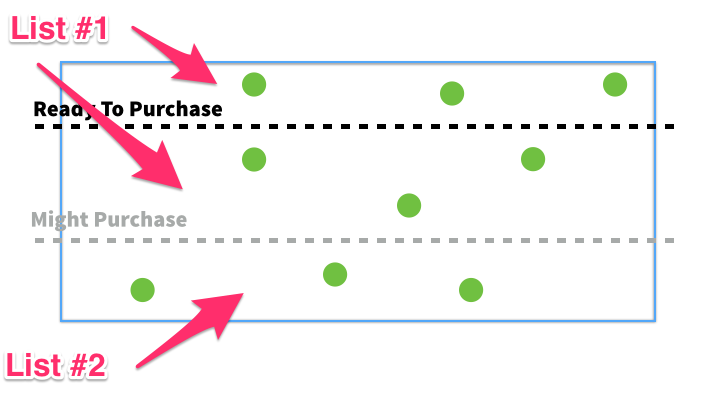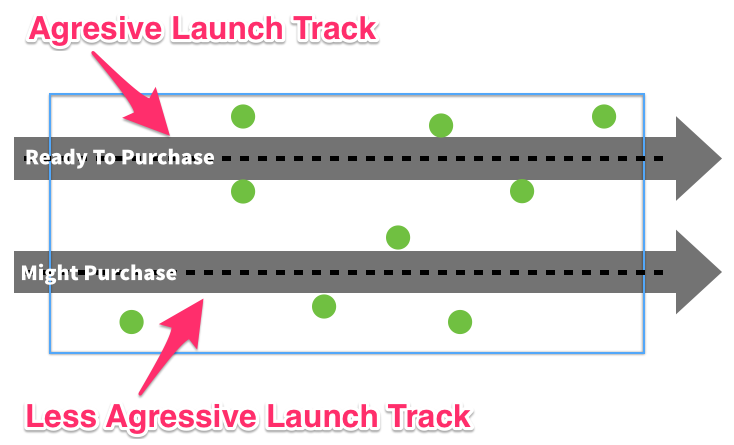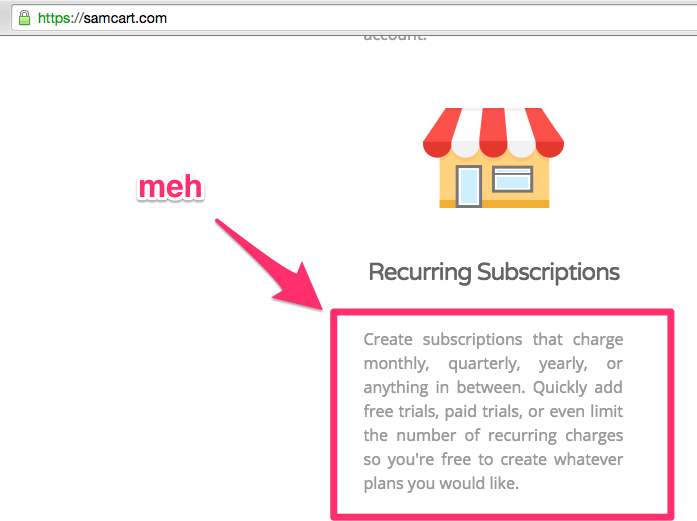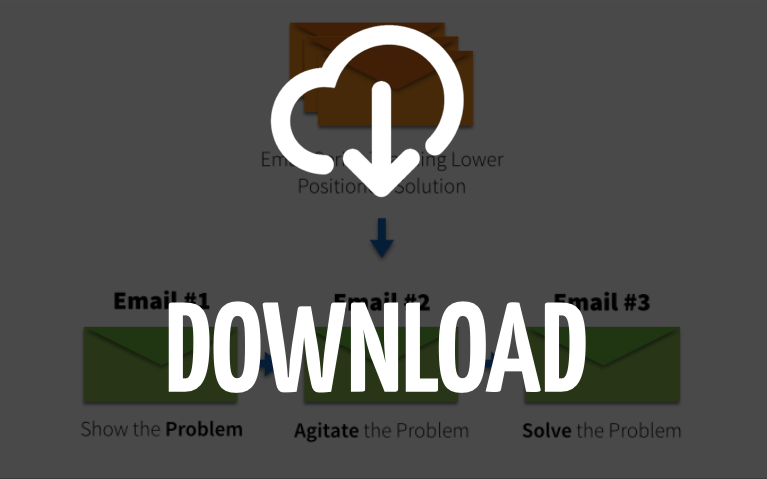When I was 7 years old, my brother and I opened up a baseball card shop.
It was my first “business.”
Yes, we sold them out of the window of our bedroom.
No, we never made any profit.
In fact, on our first day of business we got scammed. This big kid from down the street came and pillaged through a basket of crappy cards we had lying to the side.
Then after a few minutes of digging through the basket, he offered us $20 for the entire thing.
If you’ll remember back to when you were 7 years old, $20 was the modern-day equivalent of a brand new car.
“$20!!!”
“SOLD!”
What we didn’t know at the time was that he had swiped our Bo Jackson rookie card from the top of another pile and put it at the bottom of the pile in the basket.
Scamming his way to a $100 card.
Hours after the transaction went down we discovered our mistake and realized we’d been had.
Lesson. Learned.
It’s really easy to look at sexy headlines like the ones I’ve used over the past few weeks and think everything has been all roses and butterflies.
“How we used a Post-Launch Sequence to add $40,684 in sales”
“How to launch an online course and make $220,750 in 10 days”
The truth is… under the hood… I screwed a bunch of stuff up.
I learned a lot of lessons.
Disappointed quite a few people.
Lost a good bit of money.
Today I want to share those lessons with you, so that when you launch your next product you don’t repeat the same dumb mistakes I’ve made.
• Lesson 1: How to launch an online course (and make $200,000) • Lesson 2: How to use a post-launch series when launching your course • Lesson 3: Key Lesson: You must be able to “Figure it Out” • Lesson 4: How to quickly price your online course
Three Things I Screwed Up
Thing #1: Too aggressive with people who weren’t interested
When you are doing a product launch to your email list, you really are launching to two different lists.
List #1: The people who are potentially interested in what you have to sell.
List #2: The people who aren’t even close to being interested.
Derek Halpern calls this the Yes Line.
Think about it like this…

The mistake I made was trying to use the same way to sell the course to both types of people.
I sent a total of 26 emails over a 10-day period.
I don’t regret the volume of email I sent. When it comes time to sell, I am completely unashamed of selling.
However, no one likes a pushy salesman.
And to the people on List #2, the ones not even close to being interested, I came across as a pushy salesman.
I regret that.
What I’ll do differently next time:
Next time I’m going to use a strategy I learned from studying Michael Hyatt.
I will develop two launch tracks.
One for those people who have a high likelihood of being interested in my product and one for those who have a low chance of being interested.

I’ll do this three ways:
Way #1: Segmenting those people who open and click my pre-launch emails into List #1
Way #2: Segmenting those people who download any pre-launch and launch bonuses into List #1
Way #3: Segmenting those people who have downloaded or read blog content that is similar to the topic of my course into List #1
In other words, if you’re on my list but have not raised your hand in the past 90 days to tell me you’re interested in the topic of the course (list building), then you won’t see nearly as many emails from me.
Thing #2: Slow on delivering bonus material
During the launch of my course I made up several bonuses as I saw the opportunity arise.
These bonuses were being offered as incentives to buy.
“Buy tonight and get XYZ bonus. It will go away tomorrow so be sure to buy tonight!”
That type of stuff.
The general strategy is extremely effective. It gives the subscriber a firm reason to buy and a timeline they need to buy within to prevent the loss of that bonus.
However, this is where things went sideways on my end…
I have been slow at creating and delivering those bonuses. Sure, there are excuses I could offer as to why (kids, tech problems etc.).
But at the end of the day, 4 of those bonuses were to be delivered in June. It’s now mid-July and they still aren’t delivered.
What I will do differently next time:
For the course’s fall launch, communication needs to be quicker and clearer on my end.
#1: If a deadline is to be missed, I need to clearly state that ahead of time and give the new expected delivery date, along with a clear explanation of the cause of the delay.
#2: Make as many of the bonuses BEFORE the launch of the product as possible.
Note: I think creating bonuses during the launch can be extremely effective as you can judge the needs and wants of your list in real time in a way that’s tough to predict months ahead. However, before announcing the bonuses, be sure you have a clear and realistic plan in place to deliver them.
Thing #3: Picked an unreliable software platform to process monthly payments
What a headache.
Two weeks before launching the course I decided I would use SamCart as my shopping cart.
It’s easy to use.
Looks pretty.
Integrates with Stripe.
And it offers easy to implement one-click upsells.
All things that my built-in Infusionsoft shopping cart doesn’t offer. BUT what I didn’t realize at the time is how terribly inept SamCart is at managing payment plans.

Offering payment plans for your product is a great way to increase revenue.
However, you have to stay on top of them or you’ll lose a lot of money in failed payments and declined/expired cards.
Since we have over $100,000 in payments to be processed over the next 12 months, this is really important to us.
We have had myriad issues with the SamCart platform since using it.
Issue #1: It’s practically impossible to update someone’s credit card number in the system.
Issue #2: Unreliable reports. (For example, they say a payment went through when in reality it didn’t.)
Issue #3: Buggy software.
During the launch we realized SamCart wasn’t actually processing payments. We had generated over $70,000 in sales but SamCart had failed to process any of it.
After hours of conversations with support, this issue was fixed. But unfortunately these types of bugs and glitches have been the norm rather than the exception.
Issue #4: No control over follow-up
When managing payments on scale, you need visibility and control over what happens when a payment fails.
What emails do you send? How many do you send? Were they actually sent? What was in them? With SamCart this is a black box. They supposedly send emails. But my research has shown this is spotty at best.
..
I like the direction SamCart is headed. I like that it’s created by people who have a business model similar to ours.
However, at this time it’s just not capable of handling a large volume of subscriptions.
What I will do differently next time:
#1: Do more research before choosing a new shopping cart.
#2: Ensure we have control over and access to the email follow-up system.
#3: Fully test the shopping cart months ahead of time to prevent any unforeseen issues.
#4: Not use SamCart.
At the end of the day…
I could go on for hours about other lessons learned during this launch.
But these are three of the biggest.
Here is the moral of the story…
Whether your launch defies your wildest expectations or falls flat, stuff will go wrong.
You’ll fail to live up to your expectations. You’ll make a bad decision on what shopping cart to use. You might price your product incorrectly…
… but here is the fun part.
Do it anyway 🙂
Create. Ship. Learn.
Learn from your mistakes and do better next time.
But next Friday it’ll be going away forever. So if you want it Get it. (The Product Launch Playbook is no longer available)
